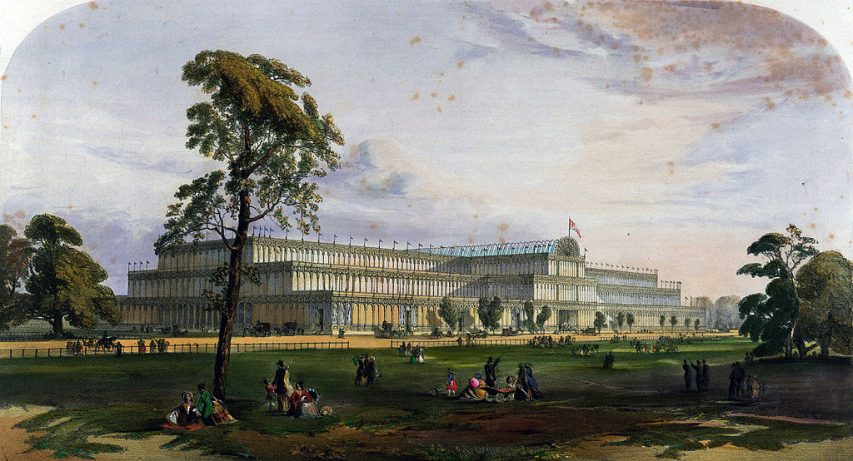Rex Krueger
Published 20 May 2020Make a $45 tenon saw perform like a premium tool in this complete rehab video.
More video and exclusive content: http://www.patreon.com/rexkrueger
Get the Spear and Jackson tenon saw from this video: https://amzn.to/2zykhs6
Get the FREE Saw Handle Printout: https://www.rexkrueger.com/store/free…
Plans, t-shirts, and hoodies: http://www.rexkrueger.com/storeSign up for Fabrication First, my FREE newsletter: http://eepurl.com/gRhEVT
Paul Sellers sharpening video: https://www.youtube.com/watch?v=UA5Di…
Saw Vise Build Video: https://www.youtube.com/watch?v=_e4rq…
Cut Smooth Curves with Flat Tools: https://www.youtube.com/watch?v=LX-0D…Tools and Materials in this Project (affiliate):
Spear and Jackson Tenon Saw: https://amzn.to/2zykhs6
Same Saw, 10 inches long: https://amzn.to/2T5h75Y
Crown Tenon Saw: https://amzn.to/3fM9uek
Digital Calipers: https://amzn.to/35YO4WK
Tack Hammer: https://amzn.to/35XSrBz
(I used this for removing the set. Not the exact one I use, but a quality tool.)
Saw File: https://amzn.to/2LuhxOV
(Not the exact one I use, but a good tool from a quality maker. Correct size for this saw.)
Saw Nuts: https://amzn.to/2T4hhKZ
Saw Nuts (different source): https://bit.ly/2Z4daSO
Super 77 Adhesive: https://amzn.to/2zymSCm
Dreadnaught Half-Round File: https://amzn.to/2Z504oi
Large Round File: https://amzn.to/2Z6hykb
Minwax English Chestnut Stain: https://amzn.to/2Z1iGpb
Clear Shellac: https://amzn.to/2AtgmNB
Paste Wax: https://amzn.to/3dW596PWood Work for Humans Tool List (affiliate):
Stanley 12-404 Handplane: https://amzn.to/2TjW5mo
Honing Guide: https://amzn.to/2TaJEZM
Green buffing compound: https://amzn.to/2XuUBE2
Cheap metal/plastic hammer for plane adjusting: https://amzn.to/2XyE7Ln
Spade Bits: https://amzn.to/2U5kvML
Metal File: https://amzn.to/2CM985y (I don’t own this one, but it looks good and gets good reviews. DOESN’T NEED A HANDLE)
My favorite file handles: https://amzn.to/2TPNPpr
Block Plane Iron (if you can’t find a used one): https://amzn.to/2I6V1vh
Stanley Marking Knife: https://amzn.to/2Ewrxo3
Mini-Hacksaw: https://amzn.to/2QlJR85
Blue Kreg measuring jig: https://amzn.to/2QTnKYd
Blue Handled Marples Chisels: https://amzn.to/2tVJARY
Suizan Dozuki Handsaw: https://amzn.to/3abRyXB
Vaughan Ryoba Handsaw: https://amzn.to/2GS96M0
Glue Dispenser Bottle: https://amzn.to/30ltwoB
Orange F Clamps: https://amzn.to/2u3tp4X
Blue Painters Tape: https://amzn.to/35V1Bgo
Round-head Protractor: https://amzn.to/37fJ6oz
5 Minute Epoxy: https://amzn.to/37lTfjK
Dewalt Panel Saw: https://amzn.to/2HJqGmOPlans, t-shirts, and hoodies: http://www.rexkrueger.com/store
Get my woodturning book: http://www.rexkrueger.com/book
Follow me on Instagram: @rexkrueger
May 21, 2020
Make a budget backsaw AWESOME. Total upgrade!
The Milk Dud’s (final?) flip-flop
Walking political liability Andrew “The Milk Dud” Scheer managed to bring himself to the attention of the media yet again for his decision to backtrack on renouncing his American citizenship … did Justin need him to take the heat off for another Trudeau blunder?

Andrew Scheer, paid tool of Big Dairy and dual citizen of Canada and the United States, chugs some milk during a Press Gallery speech in 2017.
Screencapture from a CTV video uploaded to YouTube.
I don’t suppose Conservative Leader Andrew Scheer’s flip-flop on renouncing his U.S. citizenship will be of interest very long, but I have parting shots to take about it. In backtracking on his original intention to give up the United States of America, Scheer showed an awareness that there is at least one position in Canadian government, that of prime minister, which requires going the extra mile to avoid the appearance of divided or compromised allegiance. I am being careful not to say “loyalty,” which, unlike allegiance, might be regarded as a purely private matter.
It is a good thing that Scheer recognizes the importance of these issues. But he made a big deal about the disavowal being a “personal decision” during the 2019 election. What’s changed now, he says, is that he will never be prime minister. So he is now free to be an American, which, by definition, is the freest goldurn thing you can be.
But: “I’ll never be prime minister” seems like a hell of a thing for the leader of the Opposition, which Scheer still is until August at the earliest, to say. Our House of Commons is in a hung state. No party commands a majority. The Conservatives (who would want us to remember that they led in the 2019 popular vote) chose not to have an interim leader in Scheer’s place while permanent successors were sized up. The Liberals don’t have anything like a binding supply-and-confidence agreement with any other party. The country is in the grip of epidemic disease.
When the behind-the-scenes Liberal-friendly Quebec dairy folks selected Scheer as their preferred patsy to “lead” the “Conservative” party, they chose very well indeed. Scheer might as well be wearing a Washington Generals jersey from now on.
1949: Death and Sovereignty | The Indonesian War of Independence Part 5
TimeGhost History
Published 20 May 2020The Dutch reconquered most of the Indonesian cities on Java and Sumatra, but the Indonesian War of Independence continues as the international community grows tired of the Dutch attitude.
Join us on Patreon: https://www.patreon.com/TimeGhostHistory
Hosted by: Indy Neidell
Written by: Isabel Wilson and Joram Appel
Director: Astrid Deinhard
Producers: Astrid Deinhard and Spartacus Olsson
Executive Producers: Astrid Deinhard, Indy Neidell, Spartacus Olsson, Bodo Rittenauer
Creative Producer: Joram Appel
Post-Production Director: Wieke Kapteijns
Research by: Isabel Wilson and Joram Appel
Edited by: Karolina Dołęga
Maps: Ryan Weatherby
Sound design: Marek KamińskiColorizations:
Carlos Ortega Pereira (BlauColorizations) – https://www.instagram.com/blaucoloriz…Bibliography: https://bit.ly/IndoSources
Image Sources:
Nationaal Archief
Tropenmuseum, part of the National Museum of World Cultures
Journal of the Humanities and Social Sciences of Southeast Asia
Tukangpulas – https://www.instagram.com/tukangpulas…The icons from The Noun Project by Adrien Coquet
Archive by Screenocean/Reuters https://www.screenocean.com.
A TimeGhost chronological documentary produced by OnLion Entertainment GmbH.
From the comments:
TimeGhost History
1 day ago
We have seen two colonial offensives, two peace agreements, civil wars and multiple foreign interventions. And yet, 1949 is the most deadly year of the entire Indonesian War of Independence. And, without spoiling the episode, stuff doesn’t end in 1949. Indonesia will stay the stage of revolts, colonialism, civil war and ideological purges for decades to come. We won’t get to cover that in these series, as these are exclusively about the Indonesian War of Independence from 1945 to 1949. We might revisit the area in the future though. If you want to support that, and share in the decision of what series to make next, you can support us on www.patreon.com/timeghosthistory or https://timeghost.tv.
Cheers, Joram and Izzy
The Great Exhibition of 1851 also served (for some) as the 19th century equivalent of the “Missile Gap” controversy
In the latest edition of his Age of Invention newsletter, Anton Howes discusses the changing role of the British government and how the Great Exhibition was also useful as subtle domestic propaganda for a more active role for government in the British economy:

The Crystal Palace from the northeast during the Great Exhibition of 1851, image from the 1852 book Dickinsons’ comprehensive pictures of the Great Exhibition of 1851
Wikimedia Commons.
… a whole new opportunity for reform was provided by the Great Exhibition of 1851. As I explained in the previous newsletter, an international exhibition of industry functioned as an audit of the world’s industries. It, and its successors, the world’s fairs, gave some indication of how Britain stood relative to rival nations, especially France, Prussia, and the United States. And whereas some people saw the Great Exhibition as a clear mark of Britain’s superiority, for would-be reformers it was a chance to expose worrying weaknesses. Thus, Henry Cole and the other original organisers of the exhibition at the Society of Arts exacerbated fears of Britain’s impending decline, giving them an excuse to create the systems they desired.
They identified two areas of worry: science and design. Britain of course had many eminent scientists and artists — some of the best in the world — but other countries seemed to have become better at diffusing scientific training and superior taste throughout the workforce as a whole. Design skills were an issue because France appeared to be catching up with Britain when it came to the mechanisation of industry; if it caught up on machinery while maintaining its lead in fashion, then Britain would not be able to compete. And scientific training appeared more useful than ever, with the latest scientific advances “influencing production to an extent never before dreamt of”. Visitors to the Great Exhibition had marvelled at the recent inventions of artificial dyes, a method of processing beetroot sugar, and the latest improvements to photography and the electric telegraph. Thus, for Britain to maintain its lead, it would need to improve the education of its workers.
The reformers’ scare tactics worked. The aftermath of the Great Exhibition saw the creation of a government Department of Science and Art under the direction of Henry Cole, who in turn oversaw the agglomeration of various museums, design schools, and other cultural institutions to what is now the “Museum Mile” in South Kensington. (Curiously, the area was originally called Brompton, but when Cole opened a museum of design and industry there, he named it the South Kensington Museum. Kensington was a much more aristocratic area nearby, though it had no “south” at the time. The museum evolved, rather complicatedly, into what is now the Victoria & Albert Museum. But unlike so many top-down area re-brands, the name South Kensington stuck.)
And that was just the beginning. Cole and his allies then oversaw a dramatic expansion of the state into education, largely through the use of examinations. Although state-funding for education had initially centred on building new schools, getting any more involved was a highly contentious issue. Most schools were controlled and funded by religious organisations, but were split between the established Anglican church and dissenters. When the government first became involved in schools, it was thus bitterly opposed by many dissenters as they feared that their children might become indoctrinated to Anglicanism. And naturally, the government could not teach dissenting religions. Yet the proposed compromise of teaching no religion at all was unacceptable to both sides. Schools were crucial, the groups believed, to keeping religion alive.
So the utilitarians came up with a workaround. Rather than getting the state too involved directly in managing the schools themselves, it would instead influence the curriculum. By holding examinations, and then paying teachers based on the outcomes of the tests, they could incentivise the teaching of certain subjects and leave the schools free to teach whatever religious beliefs they pleased. Indeed, by diverting more and more time towards teaching particular subjects, the reformers saw it as a secularising blow “against parsonic influence”. The tactic was initially applied to adult education. The Society of Arts would first trial out examinations without payments, to test their viability. Then Cole would have his department take over the examinations, first for drawing, and later for science, using his budget to fund payment-by-results. The effects were dramatic. The Society’s relatively popular examinations in chemistry, for example, rarely had more than a hundred candidates a year. But when the department instituted its payments, it soon drew in thousands. By 1862, when the government wanted to improve the teaching of reading, writing, and arithmetic in schools, they adopted Cole’s suggestion that they also use payment-by-results.
Tank Chats #70 Sherman M4A4 | The Tank Museum
The Tank Museum
Published 23 Mar 2019In Tank Chat #70, David Fletcher talks through the Sherman M4A4. The M4A4 is a relatively new addition to The Tank Museum, which is on long term loan.
Used and loved by the British, find out what makes this tank different from other types of Sherman in The Tank Museum.
Support the work of The Tank Museum on Patreon: ► https://www.patreon.com/tankmuseum
Visit The Tank Museum SHOP: ► https://tankmuseumshop.org/
Twitter: ► https://twitter.com/TankMuseum
Tiger Tank Blog: ► http://blog.tiger-tank.com/
Tank 100 First World War Centenary Blog: ► http://tank100.com/ #tankmuseum #tanks #tankchats
QotD: Gullibility and belief in conspiracy theories
There are several cognitive processes going on here:
Anecdotal thinking vs. statistical thinking. We evolved to do the former so it is natural; science teaches us to do the latter, and it is unnatural. What is natural is to connect two temporally-close events as causally connected. A happens and then B happens. So they must be causally connected, right? I vaccinated my child and shortly after he was diagnosed with autism. They must be connected, right? Not necessarily (and in this case definitely not).
Patternicity: the tendency to find meaningful patterns in both meaningful and meaningless noise. If you already believe in UFOs or Bigfoot, strange lights in the sky or shadowy figures in the trees are interpreted as a meaningful pattern that supports the belief. Often such patterns carry an additional component that I call …
Agenticity: the tendency to infuse those patterns with intentional agents who act in the world. From conspiracies to ghosts, angels, demons, and gods, we tend to impute agency to the goings on around us, as if there’s someone/something out there pulling the strings.
Confirmation Bias: we look for and find confirming evidence for what we already believe and ignore or rationalize away disconfirming evidence. Once you believe that, say, “the Jews” are running the world, or that the U.S. government (or the Bush administration in the case of the 9/11 truthers) is involved in vast global cabals to control oil, it is easy to interpret daily news stories about the goings on of governments in the light of the conspiracy theory in question. Every bit of minutia becomes pregnant with meaning. It’s not chance or contingency, it’s a Vast Right Wing (or Left Wing) Conspiracy!
Michael Shermer, interviewed by Claire Lehmann, “The Skeptical Optimist: Interview with Michael Shermer”, Quillette, 2018-02-24.






